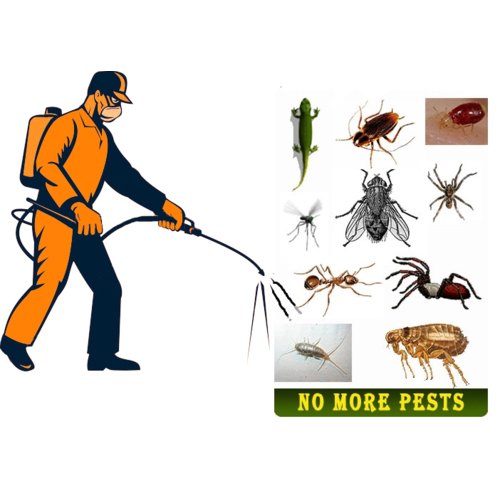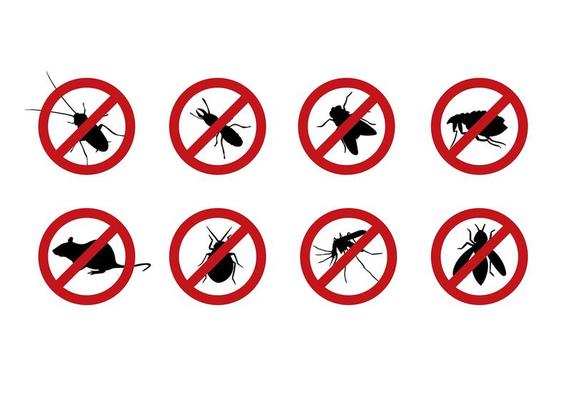Rapid Response Times for Pest Issues with Pest Control Lockhart
Rapid Response Times for Pest Issues with Pest Control Lockhart
Blog Article
Checking Out Problem and Treatment Strategies in the Globe of Insect Control
The landscape of parasite control encompasses a myriad of challenges, especially as problems of usual household insects continue to progress. By incorporating preventative measures with advanced administration methods, such as Integrated Bug Monitoring (IPM), home owners can better safeguard their environments.

Common Home Pests
When it pertains to handling our space, recognizing usual house pests is essential. These insects not only disrupt our comfort but can also position health risks and damage residential or commercial property. The most prevalent household pests consist of ants, roaches, rats, termites, and bed insects.
Ants, often seen foraging in cooking areas, can pollute food and develop big colonies. Rats, including computer mice and rats, can trigger architectural damage and carry illness like hantavirus and salmonella.
Recognizing the indicators of these insects, such as droppings, nests, or attack marks, is necessary for very early treatment (Pest Control Lockhart). Correct hygiene practices, securing entrance points, and preserving a clutter-free setting are efficient preventative measures. By recognizing these common family pests and understanding their behaviors, house owners can take proactive steps to minimize invasions, making certain a healthier living atmosphere
Recognizing Insect Infestations
Parasite infestations can intensify promptly, turning a minor aggravation into a considerable trouble if not dealt with without delay. Understanding the nature of these invasions is critical for effective administration. Bugs can attack residential and industrial areas for numerous factors, including the search for food, shelter, or breeding premises. Usual variables adding to infestations include bad cleanliness, architectural susceptabilities, and seasonal adjustments that drive pests indoors.
Recognizing the kind of parasite is crucial, as various varieties display different habits and reproductive rates. As an example, rats might develop nests in covert areas while insects like roaches prosper in moist atmospheres. Early detection usually depends upon acknowledging signs such as droppings, gnaw marks, or uncommon noises, which can indicate a trouble prior to it ends up being severe.
Ecological conditions also play an essential function in pest spreading. Cozy, humid environments can assist in the rapid development of insect populations, while adjustments in landscaping or building and construction can unintentionally create helpful atmospheres. Normal evaluations and preventative actions are critical to minimizing the risk of problems. An educated strategy to comprehending these characteristics prepares for reliable bug management approaches in the future.
Treatment Approaches and Strategies
Effective treatment techniques and methods are essential for reducing bug problems and recovering a safe environment. A diverse technique is usually best, incorporating chemical, biological, and mechanical techniques tailored to the particular bug and the intensity of the problem.
Chemical therapies consist of the usage of pesticides and herbicides, which can properly eliminate pests. However, proper application and adherence to safety guidelines are essential to reduce risks to humans and non-target organisms. Integrated Bug Administration (IPM) motivates the cautious use of chemicals as a last resource, counting rather on tracking and threshold levels to determine treatment requirements.
Organic control techniques involve presenting natural killers or parasites to lower bug populations. This strategy is progressively popular, especially in agricultural setups, as it promotes ecological sustainability.
Mechanical methods, such as catches and barriers, supply immediate alleviation from pests without presenting chemicals. Options consist of sticky catches for bugs or physical obstacles for rodents.
Eventually, the choice of therapy approach ought to take into consideration the particular parasite, the environment, and possible influence on human health and wellness and ecosystems. A well balanced mix of these techniques can successfully manage invasions while advertising long-term insect control options.
Preventive Steps for Residence
Proactively addressing insect problems prior to they escalate you could try here is important for preserving a healthy and balanced home environment (Pest Control Lockhart). Executing efficient preventative measures can considerably minimize the chance of problems, ultimately protecting both your home and wellness

Proper landscape design additionally plays a crucial duty in avoidance. Maintaining bushes and trees trimmed away from the house reduces the chances of pests locating their means inside your home. Make sure that drainage systems are operating effectively to avoid standing water, which can draw in insects and other insects.
Last but not least, regular evaluations are advisable. Regularly examining for indications of pest task enables very early intervention. By adopting these safety nets, homeowners can produce an environment that is much less congenial to pests, consequently enhancing their total lifestyle and lowering the requirement for extensive bug control interventions.
Industrial Pest Control Methods
A comprehensive technique to commercial bug control is important for organizations aiming to keep a safe and hygienic setting. Effective methods involve a combination of normal inspections, worker training, and the execution of Integrated Pest Administration (IPM) techniques.
Regular evaluations make it possible for early detection of bug task, permitting timely intervention. Organizations ought to establish a regular timetable for these assessments, concentrating on high-risk locations such as cooking areas, storage space rooms, and waste disposal sites. Worker training is just as crucial; staff ought to be informed on the indicators of parasite problems and browse around these guys the importance of reporting them right away.
Carrying out IPM techniques aids minimize parasite issues sustainably. This includes habitat modification, such as sealing entry points and reducing clutter, as well as employing all-natural deterrents prior to considering chemical therapies.

In addition, teaming up with a licensed parasite control service provider guarantees access to expert expertise and innovative treatment options. This collaboration can result in tailored insect control intends tailored to the certain demands of the service, lessening risks and boosting general efficacy. Ultimately, a proactive and informed method fosters a pest-free setting, securing both weblink public health and wellness and company credibility.
Verdict
In verdict, effective insect control demands an extensive understanding of typical household insects and their actions, coupled with targeted treatment approaches. Implementing precautionary actions alongside treatment methods such as Integrated Parasite Management and biological control improves the capacity to mitigate infestations.
Report this page